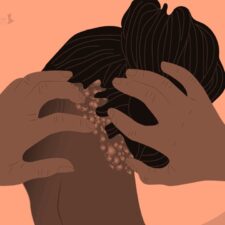
Sleep apnea is a respiratory disorder wherein breathing stops for brief periods of time, often dozens of times per night.
Three Types of Sleep Apnea
There are three general types of sleep apnea: Obstructive Sleep Apnea (OSA), Central Sleep Apnea (CSA) and Complex Sleep Apnea.
Obstructive Sleep Apnea
In OSA, the soft tissue and muscles in the throat relax excessively and the airway is temporarily blocked, causing a brief cessation of respiration. The tissue and muscles involved in this disorder are the uvula, tongue, soft palate and tonsils.
When breathing ceases, the brain senses the decrease of oxygen levels in the blood and causes a brief period of awakening, enough to cause the individual to resume breathing again.
These periods of wakefulness are often so brief that the sleeping individual has no memory of waking from their slumber.
Some individuals with OSA may awaken with a snorting, gasping or choking sound, something that sleep partners may notice more than the sleeping individual, who may actually think that they sleep relatively well. However, many individuals with OSA report daytime sleepiness and generally poor sleep quality.
Central Sleep Apnea
With this disorder, the brain is the culprit, failing to send messages to the body’s muscles of respiration. CSA is much more rare than OSA, but the symptoms of sleepiness and awakening with shortness of breath can be very similar to OSA. Snoring and sleepiness during the day are also common.
Complex Sleep Apnea
This disorder involves both a physical obstruction of the airway during sleep as well as problems with the timing and rhythm of respiration.
Symptoms of Sleep Apnea
Although slightly different for some individuals, symptoms of sleep apnea can include:
- Loud snoring
- Excessive sleepiness during the day (also called hypersomnia)
- Sore throat or very dry mouth upon awakening
- Difficulty staying asleep (as opposed to initially falling asleep)
- Observation by sleep partner of cessation of breathing during sleep
- Waking abruptly with symptoms of shortness of breath, snorting or choking
Risk Factors
Risk factors for sleep apnea are varied, but include:
- Obesity, especially with excess weight around throat and upper airway
- Hypertension
- Narrow airway
- Male gender
- Age over 65
- Family history of apnea
- Use of cigarettes, alcohol, tranquilizers and other relaxants
- Neck circumference over 17 inches
- Stroke, heart disorders, brain tumor (for Central Sleep Apnea)
Treatment Options
There are a variety of treatment options for sleep apnea, each with various risk factors and potential for inconvenience.
- CPAP: A machine that increases air pressure in the airway by delivering pressurized air into the nose and throat via a mask worn throughout the night. CPAP is the most common treatment for apnea, although many users may find it uncomfortable and difficult to adjust to at first.
- BPAP: A machine that delivers an adjustable level of airway pressure that some users may find more tolerable than CPAP.
- Oral appliances: Various oral appliances are offered for the treatment of apnea. These appliances generally bring the lower jaw forward during sleep in order to keep the airway open. Side effects can include a permanently altered bite and jaw muscle pain, although exercises can reduce or eliminate these complications.
- Surgery: There are a number of surgeries offered for the treatment of sleep apnea. These can include changes to the structure of the jaw, or a procedure wherein tissue from the back of the mouth and top of the throat is removed, along with the adenoids and tonsils. Moderate success can be achieved with this type of surgery known as uvulopalatopharyngoplasty (UPP), but recovery can be quite painful.
- Tracheostomy: For severe cases, a hole is cut in the throat and a tracheostomy tube is worn at night, and the individual breathes through this tube during sleep.
- Other options: Weight loss and the avoidance of alcohol, sedatives, tranquilizers and cigarettes are options for controlling apnea. Avoiding sleeping on your back (supine position) by sleeping on the abdomen (prone position) or side can also be helpful. Some alternative treatments like acupuncture and the elimination of wheat gluten from the diet have shown some promise, but rigorous scientific study of these methods has yet to be conducted.
Conclusion
Overweight men over the age of 65 with a family history of apnea are at the greatest risk of developing this disorder—especially OSA—although non-obese men younger than 65 can also develop apnea, especially in the presence of a positive family history for apnea. Central Sleep Apnea, a much more rare form of apnea, is generally caused by brain tumors, strokes, cardiac disorders and strokes.
If you or anyone you know has symptoms similar to those outlined in this article, a referral from a primary care physician to a doctor specializing in sleep disorders is recommended.
A sleep specialist will usually order an overnight sleep study, where the individual spends the night in a specialized laboratory where he or she can be observed, and various physiological functions such as blood oxygen levels and airway movement can be measured and recorded.








